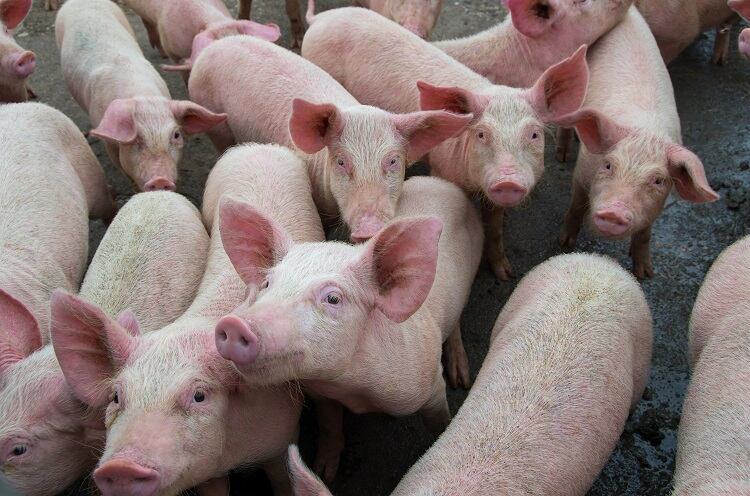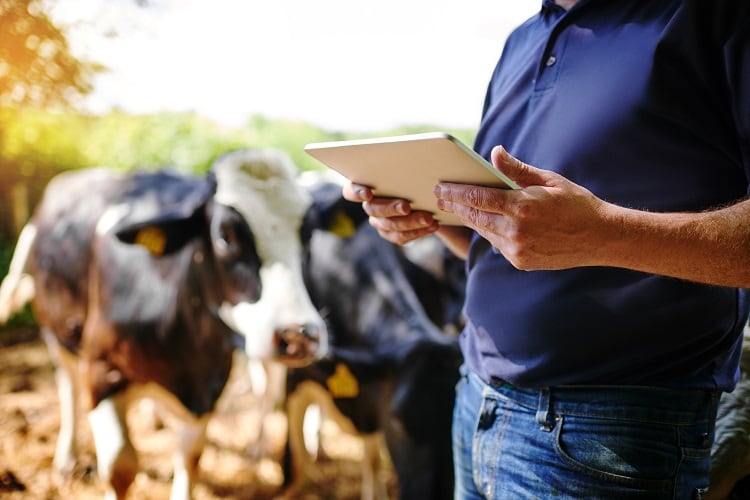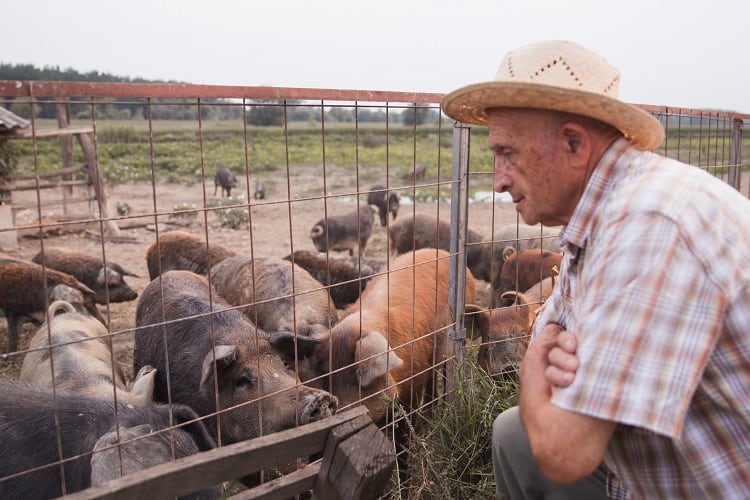Since Red Tractor was established in 2000, it has been adopted by every major retailer and caterer business in the UK, as well as many leading home-grown brands.
A total of 46,000 farmers are Red Tractor-certified, with market penetration representing 82% of British beef, 65% lamp, 95% pork, 95% chicken, 80% turkey, 70% duck, and 98% dairy categories.
Claiming to be the ‘most recognised and trusted’ food logo in the UK, the scheme has taken an interest in the Department for Environment, Food & Rural Affairs’ (Defra) call for evidence on animal welfare labelling.
At the Westminster Food & Nutrition Forum last month, Red Tractor CEO Jim Moseley posed some questions: How interested are UK consumers in animal welfare? And how feasible is developing a label covering a multitude of production methods?
Do consumers care about animal welfare?
To investigate how interested UK shoppers are in animal welfare, Moseley turned to consumer research undertaken by the Agriculture and Horticulture Development Board (AHDB).
When thinking about a specific meat purchase, the majority of consumers said price was an important factor, followed by appearance and whether the meat product is British or locally sourced. Much further down the list comes welfare standard.
“We’re probably starting from a point…where consumers are not overly concerned about animal standard,” said Moseley.
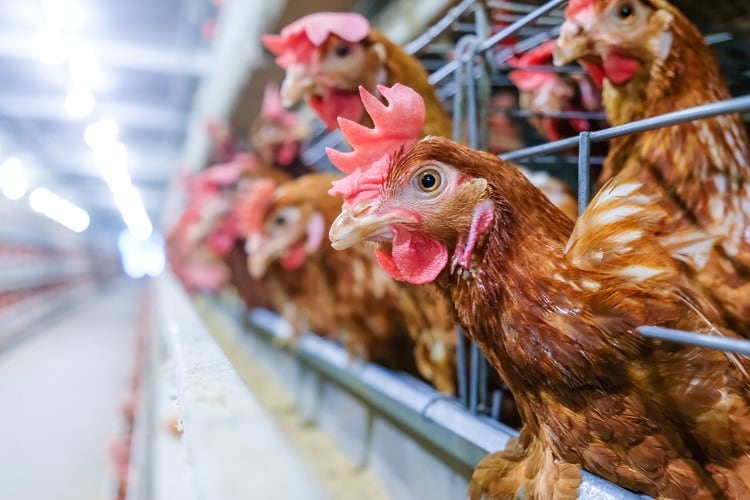
Drilling a little further into consumer attitudes, Red Tractor found that shoppers largely fit into three categories.
The majority don’t want to know about animal welfare standards, suggested Moseley. Considering that ‘meat is meat, not animals’, these shoppers ‘don’t want to think about it’ and ‘hope that all animals are treated well’.
The second largest group is made up of consumers willing to make ‘simple steps’ to back animal welfare initiatives. Shoppers in this category are likely to purchase products produced according to ‘no brainer’ initiatives such as free range eggs. They’re largely happy with the choices available, don’t want to spend too long ‘thinking about things’, and don’t need the ‘detail’.
And the smallest consumer category contains shoppers interested in learning more about production methods and welfare standards to help them ‘make the right choices’. Once convinced, these shoppers are prepared to pay more, we were told.
Consumer perception and farming reality
Red Tractor also believes there is a disparity between consumer perceptions of production methods and reality on the farm.
“The distance between people’s perception and belief in how a product is produced at the moment, particularly on-farm, and the reality of how it is produced, is incredibly big. There is a really big divergence between what people know and what actually happens,” said Red Tractor’s CEO.
In consumer research conducted by Red Tractor in 2020, shoppers were asked how the pigs that produced their pork products were reared. The vast majority responded that the pigs were all bred and reared in spacious areas outside with access to straw.
These responses are at odds with reality, suggested Moseley, adding that consumers had no idea about conventional production methods such as the use of farrowing crates (metal crates within a pen where pregnant sows are placed after giving birth). This creates somewhat of a dilemma when it comes to animal welfare labelling in pork, he inferred.
“If you start to introduce the concept of, let’s say a farrowing crate, in order to explain a higher welfare system, they’re absolutely horrified…
“Almost any animal welfare labelling on pork will probably be below people’s current expectations on how pigs are bred and grown.”
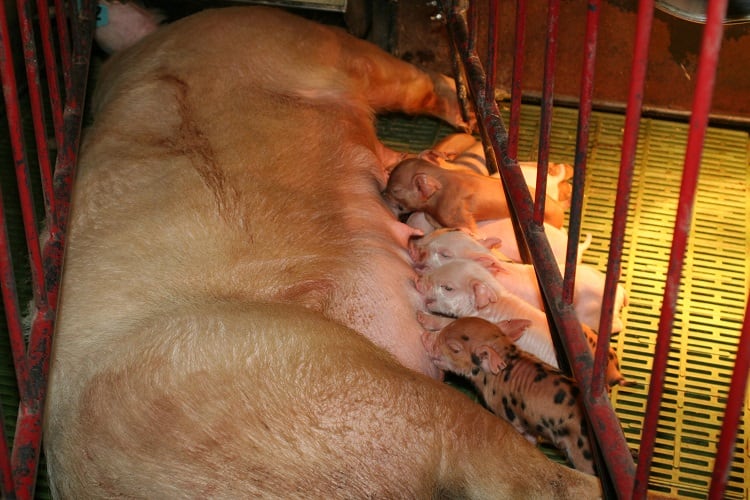
On the other hand, consumers suspect the worst when it comes to poultry rearing – included that chickens are ‘crammed in’, reared inside in cages rather than outside, and ‘pumped full’ of substances. Despite suspecting the worse, according to Red Tractor’s research they ‘currently avoid thinking about it’.
An all-in-one approach?
Given the breadth of production methods and animal welfare standards currently used in livestock and poultry production, Moseley has raised concerns that incorporating them all into one labelling scheme presents a challenge.
“Developing a label to include every element of animal health would be impossible…” said the Red Tractor CEO. “It’s also very difficult to label when there are so many production methods in the UK…which make any type of labelling methodology extremely problematic.”
Red Tractor’s solution is to concentrate on around 100 standards focused on the health and welfare of the animal. These include housing, shelter and handling facilities; stockmanship and staff training; medicine use and pain relief; feed and water; biosecurity and disease control; as well as husbandry procedures and fallen stock.
The labelling scheme currently has three certifications: ‘Certified Standards’, ‘Enhanced Welfare’, and ‘Free Range’. An ‘Organic’ label could be considered in the future.
The Red Tractor Certified Standards label is recognised by 77% of primary shoppers and trusted by 74%, boasted Moseley. And even if consumers may not understand the ‘full detail’ behind the ‘Enhanced Welfare’ scheme currently available for poultry, the CEO stressed ‘they still appreciate it’s a tier up’.


